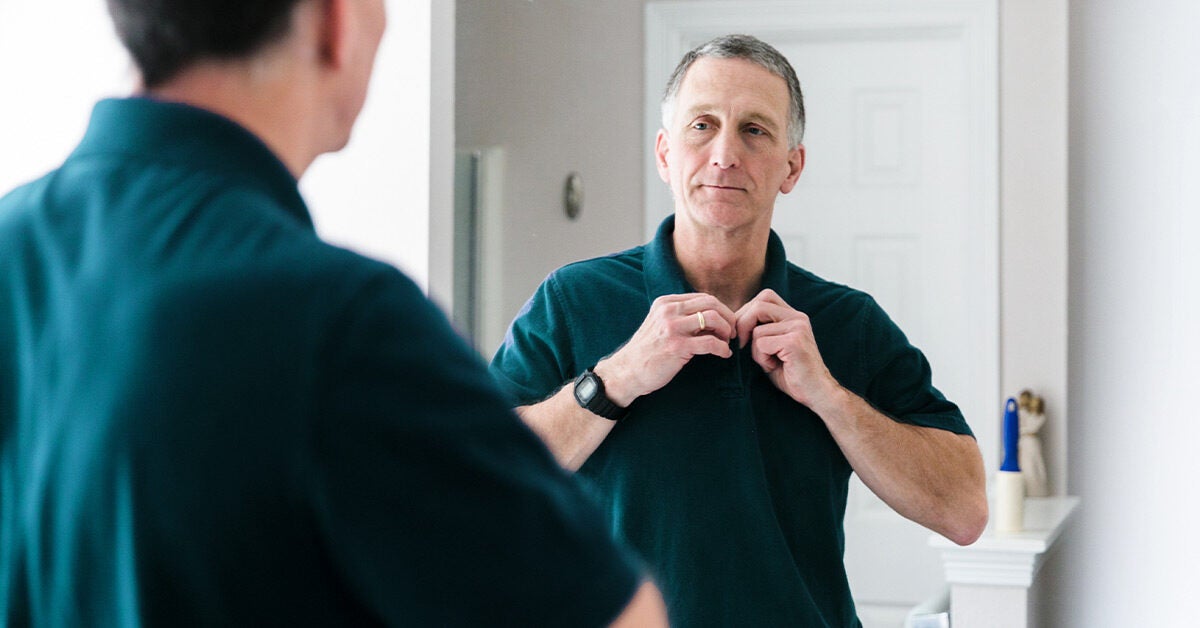
Any change or lump on the chest or underarm could be a sign of male breast cancer.
The American Cancer Society (ACS) estimates that 2,650 men in the United States will be diagnosed with breast cancer in 2021, and 530 will die from breast cancer.
Because people assigned male at birth may not be as familiar with breast cancer symptoms, it can be easily missed in the early stages. Signs such as fatigue and unintentional weight loss may occur as the cancer spreads.
Breast cancer affects about 1 in 800 men in their lifetime, compared with 1 in 8 women. Male breast cancer is uncommon, but early diagnosis is crucial. Any sign of breast cancer should be checked out by a doctor.
Here, we go over more signs of male breast cancer and when to see a doctor.
The first sign of breast cancer in people assigned male at birth is likely to be a lump on the chest or underarm. There are exceptions, but a typical breast cancer lump is:
- hard or rubbery
- irregularly shaped
- bumpy rather than smooth
- not easily moved with your fingers
- painless
- grows over time
Breast cancer lumps can be found anywhere from the middle of the chest to the armpits and all the way up to the collarbone.
Other signs and symptoms of breast cancer include:
- scaling, flaking, or thickening skin
- puckering or dimpling of the skin
- swelling, redness
- change in the size or shape of the chest or breast area
- inverted or misshapen nipple
- clear or bloody nipple discharge
- persistent rash or sores on or around the nipple
- pain in or around the nipple
- swollen lymph nodes under the arm or near the collarbone
Breast cancer usually affects only one breast. Unexpected enlargement of both breasts is more likely to be a condition called gynecomastia.
Once breast cancer starts to spread, other symptoms may include:
The most common types of breast cancer are:
- invasive ductal carcinoma, which begins in the ducts that would carry milk to the nipple (people of all sexes have these ducts)
- invasive lobular carcinoma, which begins in the lobules that would produce milk (males have these as well, though they don’t usually work to make milk)
- ductal carcinoma in situ, which is considered a pre-cancerous condition because cancer cells have not spread outside the duct
Breast cancer in males is a lot like breast cancer in females. However, research suggests some differences, including:
- Males tend to develop breast cancer at an older age, typically between 60 and 70.
- Males are more likely to have estrogen receptor-positive (ER+) tumors.
- Male breast cancer is more likely to be associated with a BRCA2 gene mutation.
Some risk factors for male breast cancer include:
- BRCA gene mutations, particularly BRCA2
- family history of breast cancer
- low androgen levels
- having had radiation therapy to the chest
- gynecomastia
- hormone therapy
- having a disease that increases estrogen levels, such as Klinefelter syndrome
- having an injury or condition that affects the testicles
- liver disease such as cirrhosis
- having overweight or obesity
Cancer begins when abnormal cells grow and divide too rapidly. This can happen when there’s damage to DNA. Exactly why an individual develops breast cancer isn’t clear.
Male breast cancer is more likely to occur after age 60 and in those who have:
- BRCA gene mutations
- a family history of breast cancer
- low testosterone
- high estrogen level
Treatment for male breast cancer is the same as it is for women. Treatment is based on individual factors such as:
- cancer stage at diagnosis
- tumor size and grade
- hormone receptor status
- age and overall health
Treatment often involves a combination of therapies, such as:
- surgery
- chemotherapy
- radiation therapy
- hormone therapy
- targeted therapies
Having one or more symptoms does not mean you have breast cancer. Symptoms of breast cancer can be similar to those of other conditions.
Male breast cancer is rare, making up only about 1 percent of all cases. That said, it’s easier to treat breast cancer before it spreads, so see your doctor if you have:
- a lump or hard mass on your chest or underarm
- nipple inversion or discharge
- dimpling or puckering of the skin
A large retrospective study published in 2019 concluded there is a potential benefit to screening men at high risk of developing breast cancer. If you think you may be at high risk of breast cancer, it might be worth discussing with your doctor or a genetic specialist.
Most breast lumps are caused by something other than cancer but may still require treatment.
Everyone has breast tissue, and anyone can get breast cancer.
The most common sign of male breast cancer is a lump or hard mass in the breast area. Other signs include changes to the nipple or skin. Breast cancer lumps can also form under the arm or near the collarbone.
See your doctor if you think you have signs of breast cancer.
Male breast cancer can develop at any age, but the risk increases after age 60. If you think you may be at high risk of developing breast cancer, speak with your doctor about what to look for and whether routine screening is a good idea for you.
"breast" - Google News
August 31, 2021 at 11:54PM
https://ift.tt/2WDSnqg
Signs of Male Breast Cancer: Symptoms and Self-Exams - Healthline
"breast" - Google News
https://ift.tt/2ImtPYC
https://ift.tt/2Wle22m
Bagikan Berita Ini














0 Response to "Signs of Male Breast Cancer: Symptoms and Self-Exams - Healthline"
Post a Comment